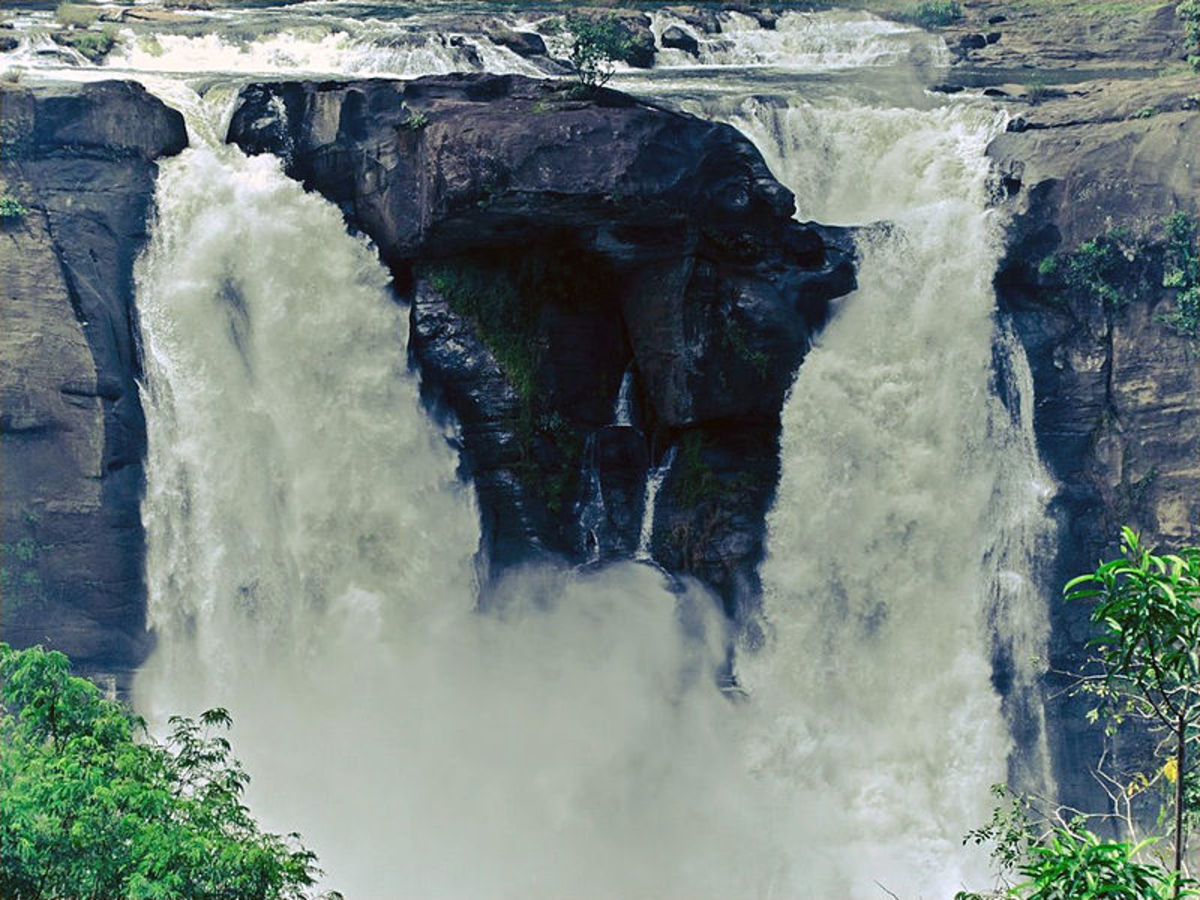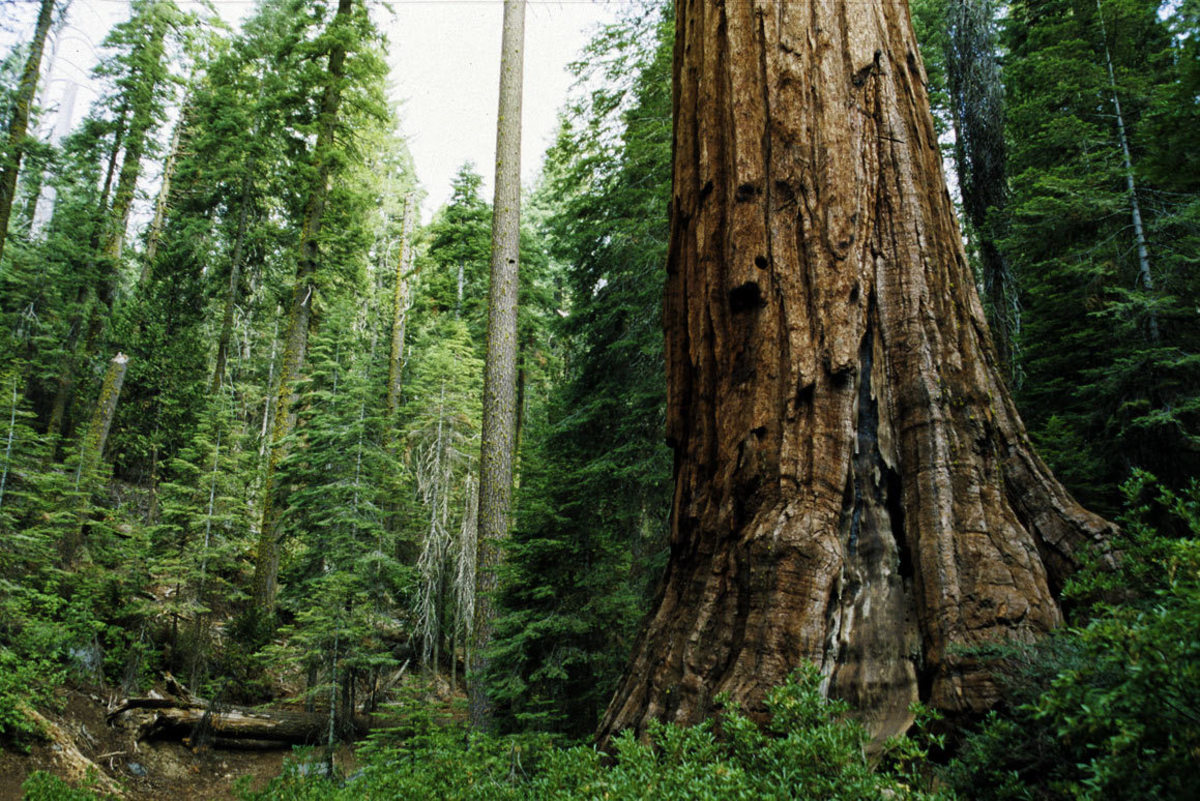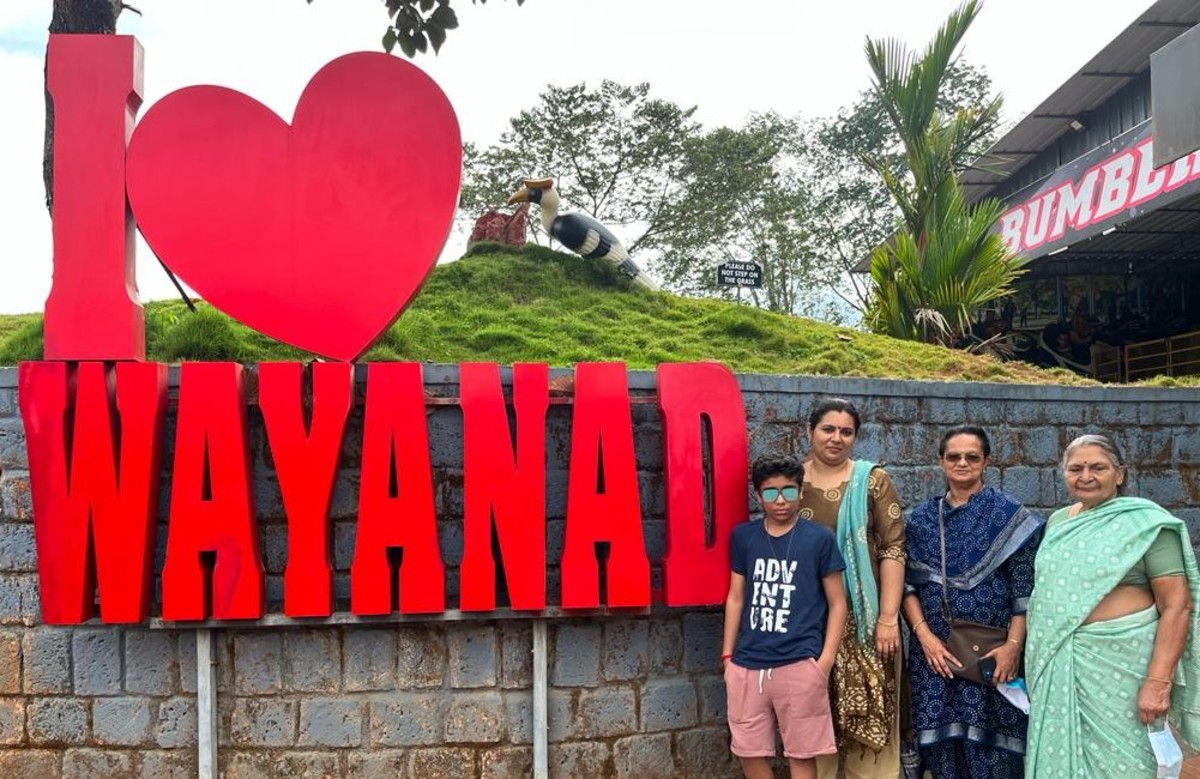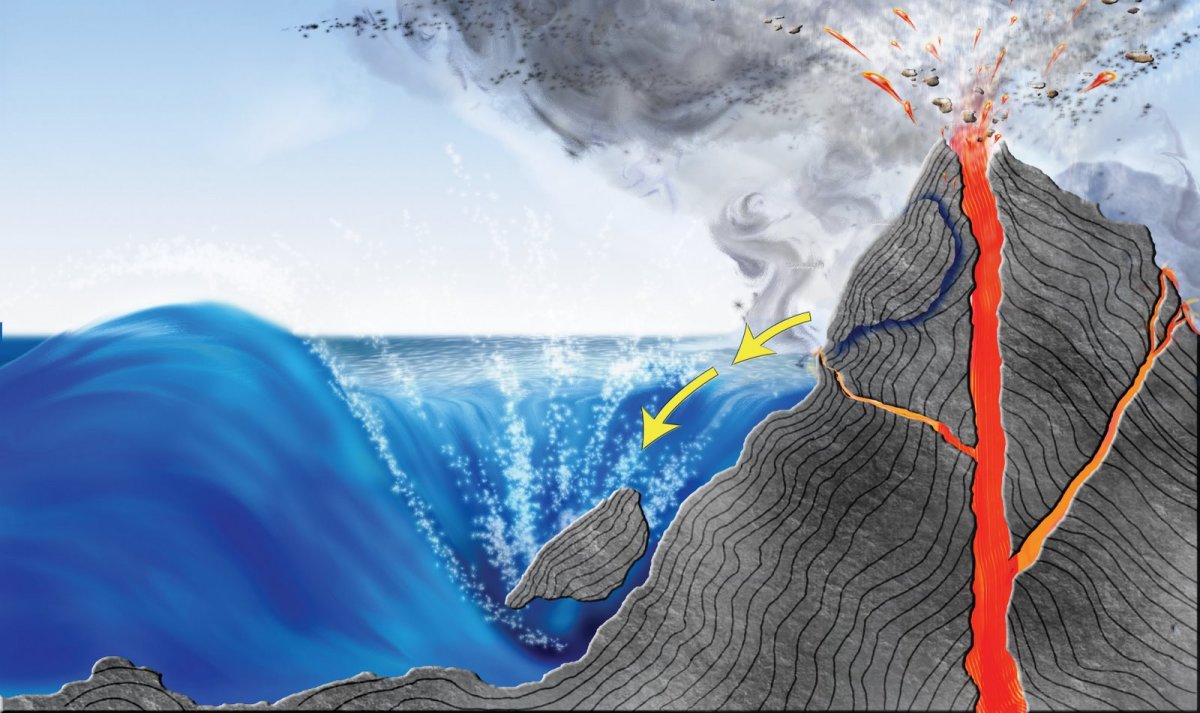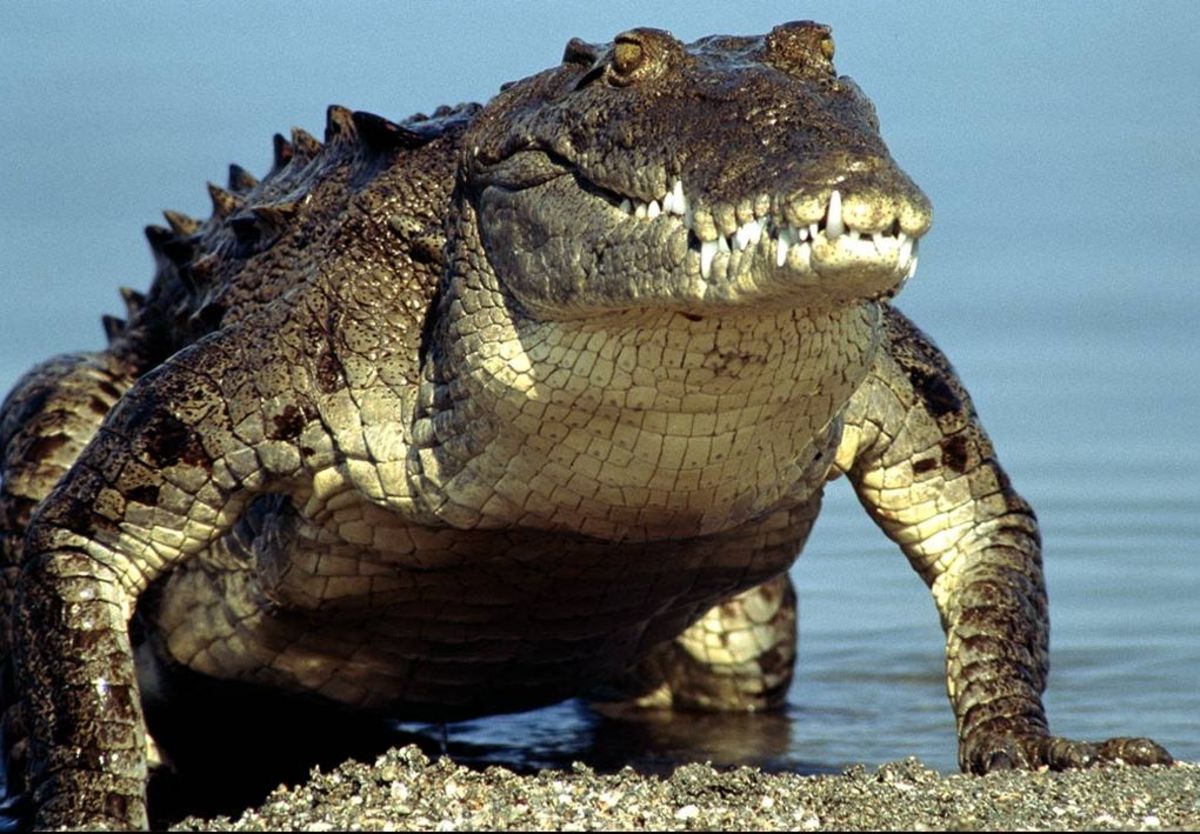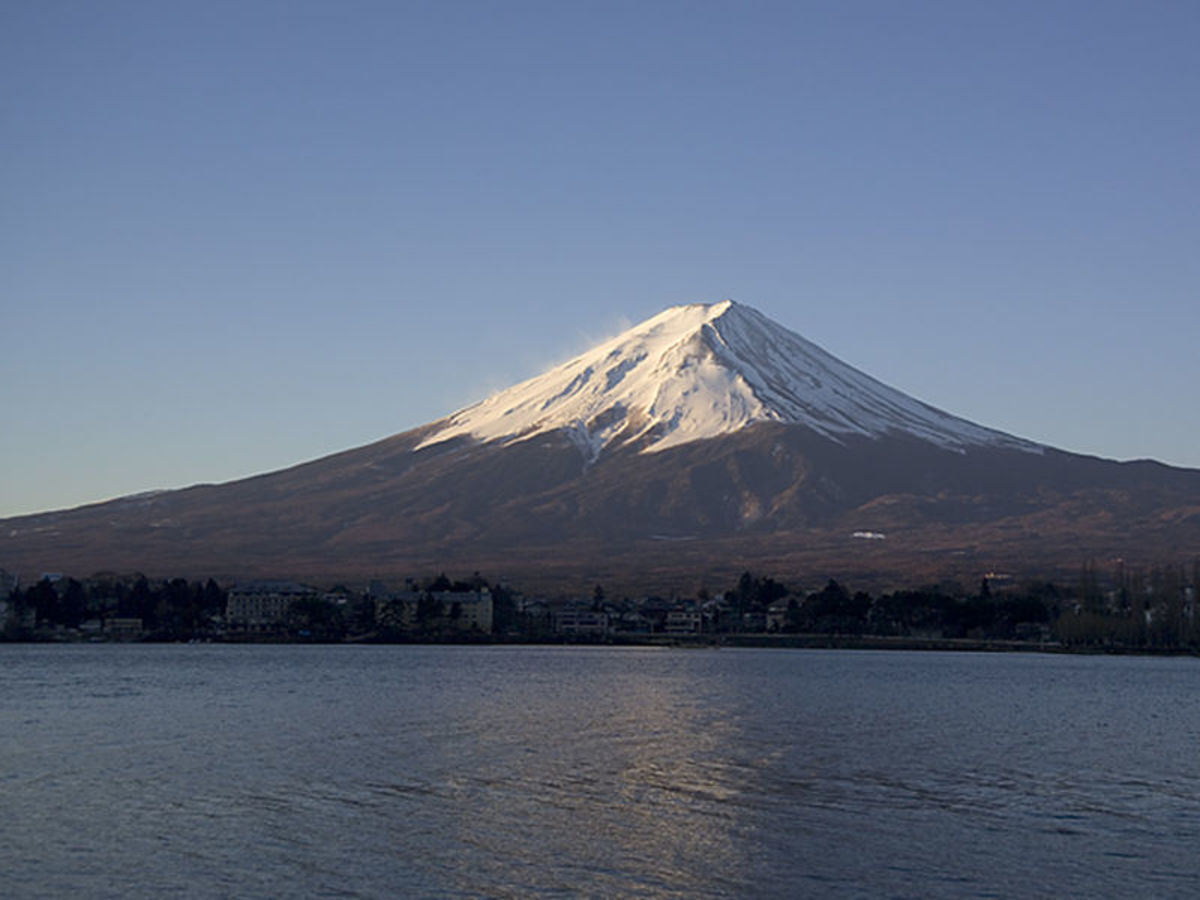Top Biodiversity Hotspots and Forests of Karnataka
Top places of biodiversity importance in the Karnataka state
Karnataka state in India has huge forest reserves. Karnataka Biodiversity Board has joined hands with Karnataka Forest Department to identify and distinguish an area of 100-200 hectares depending upon the availability in the core forest regions of 13 dry land districts. No harvesting is allowed in these areas.
The top 10 places that are rich in biodiversity have been identified just to conserve the nature in its original form. The forests conserved today are very precious for the life of humans and are helpful in maintaining balance in the environment all the time.
The Dry zone biodiversity conservation sites network project has recognized 14 rare, endangered and vulnerable species. The necessary actions like fire protection, sowing of native species, soil and water conservation are taken up in these areas. Inventorization and documentation of biodiversity is done with high priority. This helps in conserving the dry zone forest species which are nearing extinction due to their high medicinal value.
Biodiversity and the life forms
Biodiversity is the measure of different life forms within a given species, ecosystem, biome, or an entire environment in the planet. Biodiversity is the evaluation of the strength to sustain life forms in ecosystems. Biodiversity is in part a function of the type of weather acting over a particular area.
Karnataka Biodiversity Board and Karnataka Forest Department:
About 1.6 million species are known to science. India has a land area of 2.2% of the planet, It harbors over 0.4 million species (7.5% of all the known species on earth). Presently, India is one amongst the top 12 mega diversity countries in the world.
The rich forest area in Karnataka are home to some unique species.
1. Karnataka state is a native to around 0.12 million living species.
2. It has 4,500 species of flowering plants.
3. There are 405 species of marine and brackish water fishes
4. There are 218 species of fresh water fishes.
5. It is home to 522 species of birds.
6. It is a native to 158 species of mammals.
7. It has 158 species of reptiles.
8. It is home to 121 species of Amphibians.
9. There are 300 species of colorful butterflies.
10. It is a native to 1493 species of medicinal plants(808 genera and 108 families). 300 species are of commercial importance.
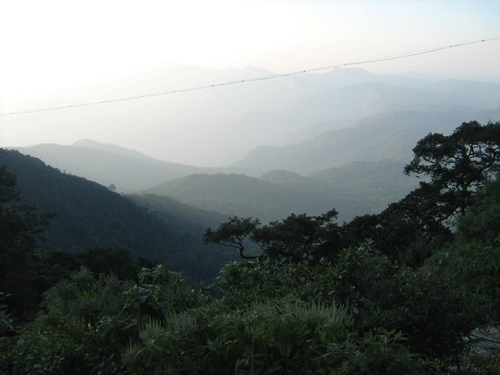
1. Kodachadri
Kodachadri in Shimoga district has grasslands and forests which are of great importance. It is the birth place of river Sharavathi. It is a mountain peak located in the western Ghats and above the sea level. The altitude of the peak is 1312m covered with dense forests.
The Kannada word "Kodacha" gives the meaning hill in native dialect and "Adri" also means mountain or hard rock in Sanskrit. It is also called "Kudajadri" or "Kodashi Parvatha". It is also a popular trekking route for people residing at Udupi district and surrounding villages. Hidlumane, Belakallu theertha and Arasinagundi waterfalls make the trekking more adventurous. It is difficult to reach the peak during rainy season as heavy rains make the path very slippery. There are other routes to reach the peak of Kodachadri and the difficulty varies depending on the path chosen for trekking
Mookambika National Park and the dense forests make it a special place for several endemic and endangered species of flora and fauna. The strong winds blowing from the Arabian sea have made the peak barren. The peak and small hills are invisible from the bottom because of the forest cover. The wild life include King Cobra, Malabar Pied Hornbill, Paradise Flycatcher, Malabar Langur, Great Pied Hornbill, Emerald Pigeon, Deer, Cheetah, wild cats, Hyena, Tiger, Panther, Bison, Python and many other endangered species.
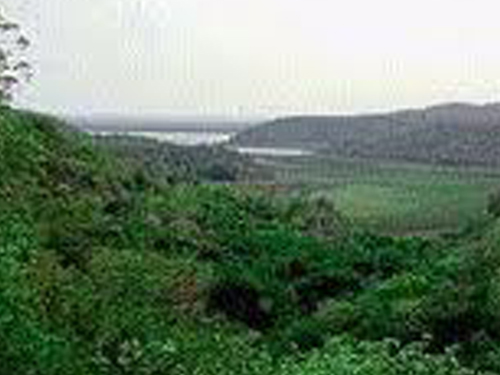
2. Konchavaram forest
Konchavaram forest is located in Chincholi taluk of Gulbarga district. The forest is in the plains and has shown its superiority over the Malnad region forests because of its unique biodiversity. It is totally spread over an area of 147.23sq km and covers 28 villages, the forest touches along the Andhra Pradesh border. It shows the status of the plains that existed thousands of years ago, like a great fossil record.
Some rare plants and creepers that are found in the forest do not originate in any other forest or the Western Ghats area of the Karnataka state. It is a dense deciduous forest that is rich in spices such as Tectona Grandis, Anogeissus Latifolia and Chloroxylon Swietenia. There are 104 types of plants and plenty of creepers, including spices with commercial value such as Madhuca Indica, Boswelia Serrata, and Terminalia Tomentosa. The Madhuca Indica spice found in abundance in this dense forest has anti-ulcer, hypoglycemic and anti-inflammatory properties.
The lush green forest has Yetti pota waterfalls as a major attraction to visitors. The wildlife in the forest include mammals such as Hyena, Indian wolf, Elephant, Black buck, Panther, Fox, Jackal, Spotted deer, Wild boar and squirrels. ‘Haati Pagadi ‘, the elephant capture and taming spot is located within the forest. About 35 species of birds are found here. The black winged Kite, Ashy wren warbler, Great horned owl, Black drongo, Blossom headed parakeet, Blue jay, Myna, Cattle egret, Koel, Grey babbler, Whistling thrush, Grey jungle fowl, Golden backed wood pecker, luggar falcon, Indian robin, Jungle babbler and Jungle crow. About 9 type of reptiles such as the Krait, Cobra, Viper, Tortoise, Monitor lizard and Python. Variety of scorpions and crabs exist in the Konchavaram forest.
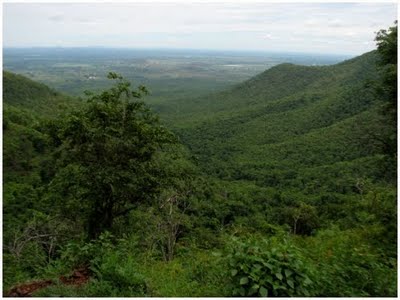
Karnataka state, India
3. Biligirirangan hills
Biligirirangan hills also known as BR Hills, is a dense hill range found in the south eastern part of Karnataka and is a border between Karnataka and Tamil Nadu. It is located in the Yelandur taluk of Chamarajanagar district and is spread across 540sq.km. Both the western and eastern ghats meet in this region. It is locally called Biligiriranganabetta. In Kannada language ‘Betta’ means hill.
Biligiri Ranga Swamy Temple Wildlife Sanctuary has the hills in beautiful picturesque situated between the Cauvery & Kapila Rivers. Sanctuary got its name from the white rock or the white mist and silver clouds that cover most parts of the hill. The height is 5,091 feet above sea level and stretches from north to south for almost 16Km.
The lower portion of the hills is covered with rich deciduous forests that provide a good shelter to Asian Tigers and Elephants of south India. The Biligiri Rangana Hills are also home to numerous smaller life forms and the sanctuary has been famous for the Gaur, a large Asian bovid. There are wild animals including 26 species of mammals such as the the Shy barking deer, Sambhar, Chital, the rarely found four-horned antelope and as much as 250 species of birds including the Paradise Flycatcher, Racquet Trailed Drongo and the Crested Hawk Eagle.
Wildlife, tribal culture and the natural beauty are together highlighted at the Biligirirangan hills.
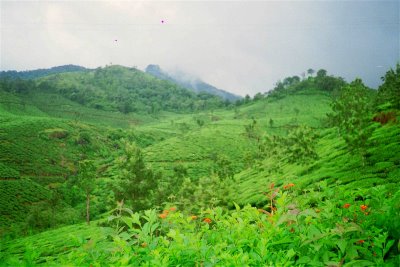
4. Talakaveri
Talakaveri in Coorg or Kodagu district lying in the Western Ghats is the birth place of river Cauvery. It is a watershed region that sustains life in south India. The tropical evergreen forests are spread across 105sq.km. which is ideal for trekking.Talakaveri wildlife sanctuary has troops of common Langur running around. The sanctuary is named after Talakaveri, the origin of the Cauvery river which lies on the eastern side of the sanctuary. The origin of the river is a holy place for the people living in Kodagu. Coffee and cardamom plantations are common in the sanctuary.
Talakaveri is home to wild animals like Sloth bear, Common Palm Civet, Elephant, Tiger, Jackal, Gaur, Wild pig, Wild dog, Barking Deer, Lion-tailed Macaque, Leopard, Leopard cat, Nilgiri Marten, Brown Palm Civet,Bonnet Macaque, Common Langur, Sambar, Spotted Deer, Malabar Giant Squirrel, Giant Flying Squirrel, Mouse Deer, Clawless otter, Common Mongoose, Brown Mongoose, Porcupine, Stripe-necked mongoose and Ruddy Mongoose. Reptiles in Talakaveri Sanctuary include the Python, rat snake, cobra and the king cobra.The forest has some interesting avian species like the Great pied hornbill, Fairy bluebird, Broadbilled roller, Malabar Trogon and Black eagle.
Flora and fauna species include Hopea parviflora, Albizia lebbeck, Dipterocarpus indicus, Artocarpus lakoocha, Pallaquim ellipticum, Dysoxylum malabaricum and Mesua ferrea' are some of the species of flora and fauna found in the forest
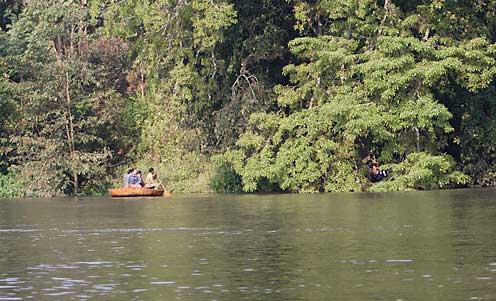
5. Kali river valley
Kali river valley in the Western Ghats area is known for its biodiversity. The valley is spread across the Goa and Karnataka borders. It also includes the Anashi and Dandeli sanctuary. Rare species of herbal plants and wildlife are found at the valley. It is a native place of the Kunabi, Marathi and Siddi community.
Many unknown and useful species of plants are found here. There are a variety of ginger plants. The Globba ginger flower is very different because of its typical tail. The pristine pure water and the fresh air in the jungle gives an enchanting experience while trekking. There are about 31 types of birds of which the Malabar pied hornbill is endemic. The forest is fast diminishing due to the human interference.
In the river as well as near the Kadra dam there are 133 types of water bird and many aquatic organisms along with an endangered fish species called Horabagrus brachysoma .The valley area also symbolizes an upper distribution limit for most of the amphibians and endemic birds of Western Ghat area.
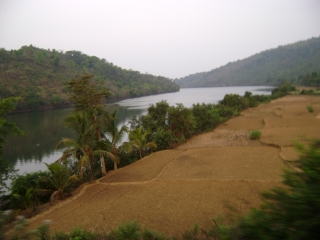
6. Aghanashini river valley
Aghanashini river valley is in North Kanara district. It has a unique environment, history and culture. There are no dams built across the river yet. It is a very lively and beautiful spot to visit. The river that starts at Sirsi reaches the Arabian sea at Tadadi village in Kumta taluk. The valley is spread across 300sq.km. The valley is spread over Sirsi, Siddapur and Kumta taluks of North Kanara district. Southern tropical semi-evergreen forests are found in western parts of Sirsi and Siddapur area.
Some of the important plant species of this region are Terminalia tomentosa , Xylia xylocarpa , Dalbergia latifolia etc. Terminalia paniculata as well as Langerstroemia lanceolata are often found by the people who go on trekking. Canebrakes are found all over the evergreen and semi-evergreen spots of the moist deciduous forests.
The whole area that stretches from Sirsi to Tadadi has a land that is much useful for horticulture. The backwater areas of Aghanashini river are known as bio-diversity areas. Variety of trees, fruits and spices are grown in this area.
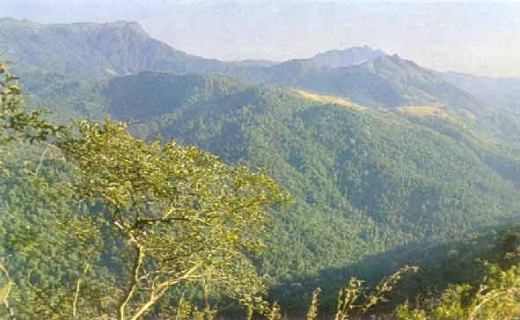
7. Kudremukh
Kudremukh is the place where Tungabhadra river takes its birth. It is a native to many distinct species of plants and animals. Mining has been stopped at the place, as per high court orders and thus the biodiversity and ecosystem is given due importance. It is spread across 600sq.km.
The Kudremukh National Park is made of valleys and steep hills. The hills that confront the severe monsoon wind, prevent any tree growth and due to this the landscape is covered with grass. The valley area which is tucked in, has better protection from wind and a deep soil profile. Because of this stunted evergreen forests thrive creating a very unique microclimate that supports the growth of orchids, mosses etc. The enchanting scene of the grassland interspersed with narrow strips of forests inspires a trekker to go deeper. The cool and refreshing wind blowing around as the trekker climbs up and down, gives a wonderful experience. The trekking takes closer to the wildlife species of many unseen birds, amphibians, plants, insects, reptiles, butterflies etc.
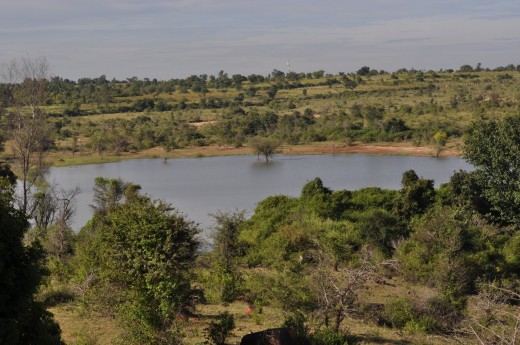
8. Amrit Mahal (Kaval) Grasslands
The Amrit Mahal plains with grassland lies between Mysore and Chitradurga, spread across 55000 acres. They are also spread across the Chennarayapatna and Tiptur taluks. It is a very special place for the Amrithmahal breed of cows and oxen. Hallikar is also a famous cattle breed in the region.
Grass that grows in the area is of very special quality. About 12 species of Poaceae type of grass has been identified out of which Cymbopogon caesius is found only at one corner of the grassland with less than minimum distribution. The Aristida hystriv and Aristida setaces of the Poaceae (grass) family are nearing extinction. The grasslands have wild bushes and weeds growing all along. The thorn-scrub vegetation is fast covering some parts of the pasture. The newly introduced trees such as the Eucalyptus citriodora, Pongamia Pinnata,and Acacia Arabica have taken over almost 30% of the grassland area. Over grazing is destroying the beauty of the grassland. As a result the perennial grasses are replaced by seasonal varieties which are of low nutritional value and reduced carbon storage potential.
Some of the rare Indian species such as the endangered Wild boar, Blackbuck, Jackals and birds like the Herons, Spot-billed Duck, Indian Pond-Heron, Little Egret and Cattle Egret and 2 species of kingfisher, Indian Spotted Eagle, Short-toed Snake-Eagle, Egyptian Vulture, Black Kite, Brahminy Kite, Oriental Honey-Buzzard, White-eyed Buzzard, Shikra, White-bellied Minivet, Stone-Curlew, five species of babblers-Rufous -bellied Babbler, Yellow-eyed Babbler, Common Babbler , Large Grey babbler and the rarely seen White-headed Babbler are found at this place. About 278 species of flora both native and introduced are found in the grasslands. These species provide the best possible environment and serve as nursery for some rare species of butterflies, birds and animals.
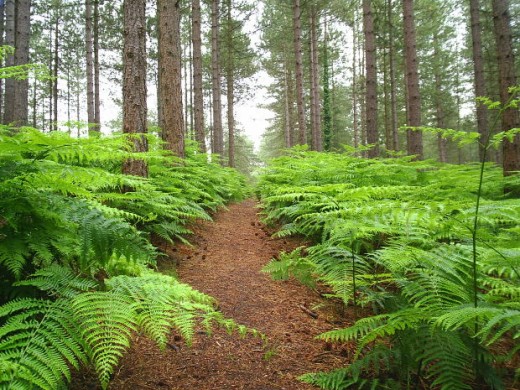
9. Kappata hill
Even though Kappata hill is located in the plains near Gadag, it has been famous for its herbal plant variety. The region has supported the unique diversity of naturally growing rare medicinal and aromatic plants.
According to experts, the medicinal plants are of more value because of the rich deposits of gold found in the soil.
The dense forest in Kappata hill is spread across a vast area of 17,000 acres and includes 21,000 species of medicinal plants. It Is also known as Kappatagudda in local language. The hill was recently declared as an ayurvedic medicinal plant hub by the Karnataka state government. The rich area is often targeted by wood smugglers who exploit the Kappata hill. Illegal Iron ore miners, wood smugglers and the local wind mill owners have violated the forest rules and the destruction continues.
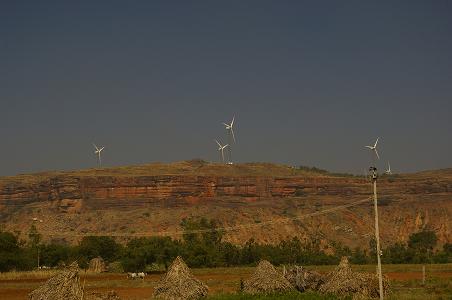
10. Kushtagi
Kushtagi taluk is located in the plains of Koppala district. The rich cereal grains and agricultural biodiversity have made the place very unique.
There are 3 seasons for crop growing at Kushtagi. During Kharif season major crops such as the Maize, Wheat, Jowar, pulses are grown and harvested. During the Rabi season Sunflower, Jowar, Bajra, Cotton and Groundnut are grown. In Summer, the crops such as Sunflower, Groundnut, and vegetables are grown with the help of irrigation. Some rare food grains like the Sesame, Foxtail millet, Proso millet, Finger millet are also cultivated by the farmers. Cotton is considered to be the cash crop in the taluk.
The dry land has supported hundreds of traditional species. It is spread across 2000 acres. Forest area of the Koppala district is very insignificant due to the mountains and rocky hills present in the region. The district has no wildlife. The major types of tree species found in the forest are Neem, Acacia arculiforms, Casium species, Tamarind, Eucalyptus, Avenue etc.


